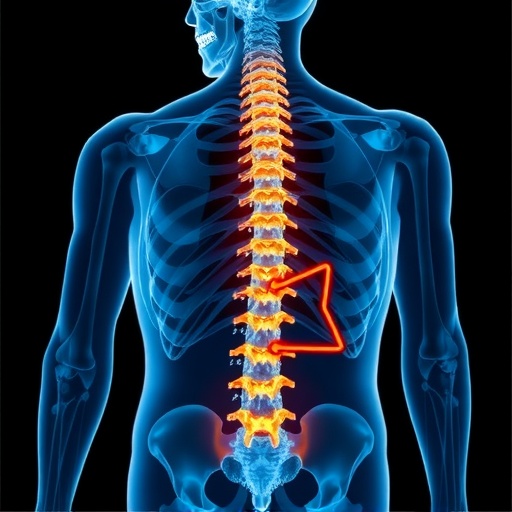
Credit: Vanessa Dumeaux
Using newly developed software, researchers have shown that genes and molecular processes in breast cancer tumor cells are tightly linked to genes and processes in blood cells, including immune system cells. The findings are published in PLOS Computational Biology.
Even if a tumor has not metastasized, its effects extend far beyond the part of the body in which it is found. For instance, a tumor influences the expression of genes in immune system cells that are involved in the body's response to cancer. These cells circulate throughout the body in the bloodstream.
In the new study, a team led by Vanessa Dumeaux during her time at McGill University examined links between gene expression in breast cancer tumors and in the bloodstream. They built a new software tool called MIxT (Matched Interactions across Tissues) that uses computational and statistical methods to find and investigate links between gene expression in different body tissues.
The team used MIxT to analyze gene expression according to RNA sequences found in blood and tumor samples from 173 breast cancer patients. The software allowed them to cluster genes into groups associated with specific molecular processes and see which processes in tumors and blood cells were associated with each other.
The analysis showed that links between molecular processes in breast cancer tumors and the bloodstream do exist, but that they vary according to the tumor subtype. For instance, the researchers found immune system-suppressing processes operating in conjunction with certain breast cancer subtypes, including the basal breast cancer subtype.
"This effort moves the community beyond the barriers of most previous molecular studies that focused exclusively on immune cells in the tumor microenvironment, providing a broader picture of how our bodies and immune system respond to the challenges of the presence of a particular tumor," Dumeaux says.
The findings could lead to future investigation into potential new ways to treat and monitor breast cancer by looking outside the tumor and exploiting the patient's systemic immune system response.
###
In your coverage please use this URL to provide access to the freely available article in PLOS Computational Biology: http://journals.plos.org/ploscompbiol/article?id=10.1371/journal.pcbi.1005680
Citation: Dumeaux V, Fjukstad B, Fjosne HE, Frantzen J-O, Holmen MM, Rodegerdts E, et al. (2017) Interactions between the tumor and the blood systemic response of breast cancer patients. PLoS Comput Biol 13(9): e1005680. https://doi.org/10.1371/journal.pcbi.1005680
Funding: We acknowledge funding from the European Research Council (ERC-2008-AdG-232997); the Canadian Cancer Society Research Institute (INNOV2-2014-702940). The funders had no role in study design, data collection and analysis, decision to publish, or preparation of the manuscript.
Competing Interests: The authors have declared that no competing interests exist.
Media Contact
Vanessa Dumeaux
[email protected]
Related Journal Article
http://dx.doi.org/10.1371/journal.pcbi.1005680




